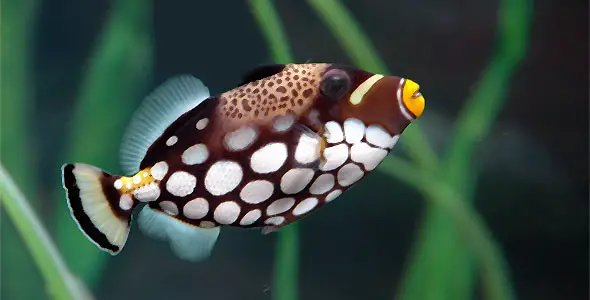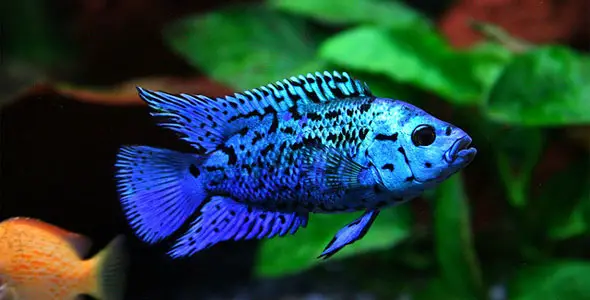Owning an aquarium can be a fun and fulfilling experience. The longer you own one, the more experience you gain in owning and caring for fish. Once you may have been overwhelmed at the idea of a tank of goldfish or the idea of a reef tank, now you’re considering looking into some of those more exciting fish. Thankfully, as with most animals, fish “scale” with your experience level, meaning there is a fish out there for every experience level aquarists. Some, however, are meant only for those advanced aquarists that are up for a real challenge. Whether they are violent, poisonous, or incredibly frail, caring for these fish should not be attempted by any but the most advanced aquarists.
Triggerfish – Triggerfish are not only dangerous to other members of a community tank, but they are dangerous to hands that have to clean out the tank or examine for injuries. Lively and aggressive, Triggerfish are rather large and will eat anything that fits into their mouths. Though their general needs are not particularly challenging, their aggressive behavior can destroy a community reef. Extensive research on the specific fish you are planning to add is recommended as certain varieties are more aggressive than others (such as the Picasso Triggerfish). If you plan to breed Triggerfish, it is important to remember that their aggressive nature increases when they are guarding their spawn.
Piranha – The only freshwater fish to make the list, Piranhas are quite picky, difficult to raise, and illegal in certain portions of the United States. Be sure to research state and local government restrictions. Owners must make a decision upon purchase: do they want a single Piranha or a school? If a single Piranha is purchased, it cannot be added to a school at a later date. Additionally, Piranha should not be kept with other fish. You cannot hand-feed Piranhas as they can easily bite a stray finger and seriously injure the owner. The have a strict diet of protein and will do best on live foods such as feeder fish or earthworms and because of their high-protein diet they produce a lot of waste. Extra care must be taken to regularly clean and maintain any tank housing Piranhas as they produce such high amounts of waste. If you do purchase Piranhas and find you cannot care for them, DO NOT release them into local waterways.
Box/Trunkfish – Related to the Pufferfish, the Box and Trunkfish provide a great challenge for the advanced aquarists. Highly sensitive, this fish can be kept in a community, but must be kept with other mild-mannered and shy fish so that it is not frightened or startled. Box and Trunkfish secrete a toxin when frightened or dying, and this toxin can wipe out an entire tank! If you see your Box/Trunkfish has been frightened or is dying you MUST remove it from the tank as quickly as possible. Even when dead the body will continue to release deadly toxins that will circulate through your filtration system and into the rest of the tank, destroying your entire community.
Moorish Idol – The Moorish Idol is one of the most sought after fish in marine aquaria. Their beautiful shape and color make them an ideal addition to any tank, but they are one of the most fragile and difficult to care for fish. Even in the best of conditions with the most experienced of aquarists, it is unlikely that this fish will live for more than a couple years in captivity. Moorish Idols are extremely picky, almost snobby, in their choice of food and will starve rather than eat something that doesn’t appeal to them. While bold in nature, when in captivity they become shy and easily bullied away from meals. If the thought of owning such a picky fish is daunting, consider looking into the nearly identical Butterflyfish.
Angels – Large, frail, and some of the most beautiful reef fishes available, the Angelfish are highly sought after and difficult to care for. With a width of up to 16 inches, they require extra large tanks that will allow them to glide gracefully through the water. The greatest concern in keeping them, however, is their diet. In the wild, some Angelfish exist entirely off coral, which is difficult to replace in captivity. Potential owners must research their ideal Angelfish as different varieties have different diets, i.e., the genus Genicanthus eats only zooplankton while the genus Centropyge eats filamentous algae. Their diet in captivity has to be specially researched and replicated as closely as possible in the tank, making them a fish only for advanced aquarists.




